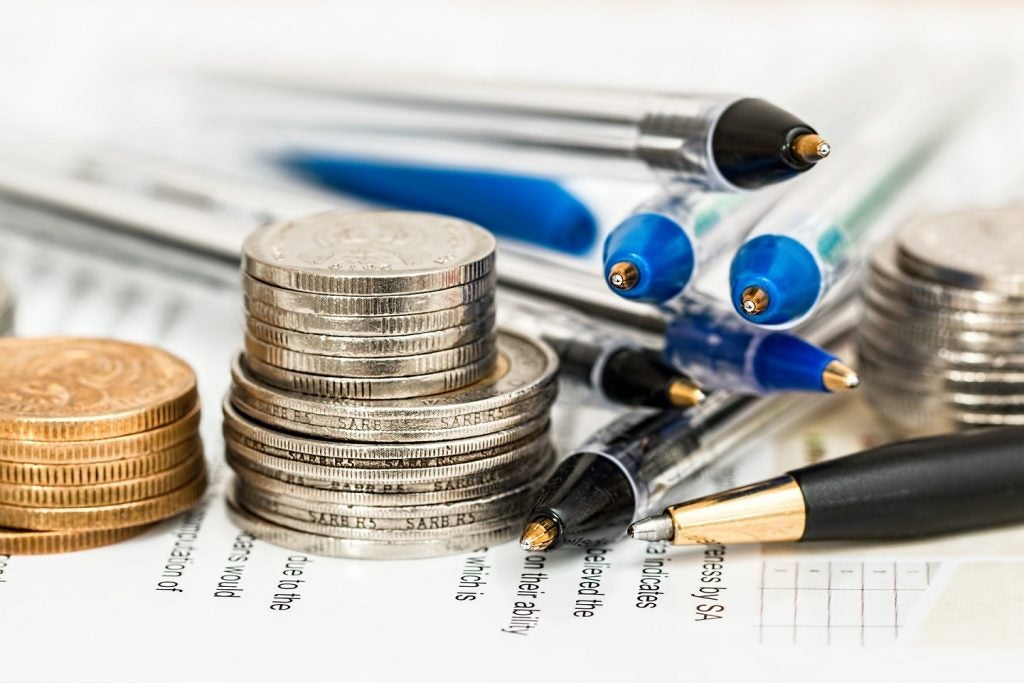Micro-insurance has the
potential to develop into a major global market but comes with
unique problems ranging from the gathering of information on target
markets to reaching of those markets. Fortunately, technology can
provide the solutions, many of which are already being applied with
notable success.
 In a recent
In a recent
study, Swiss Re predicted that the global micro-insurance has the
potential to grow into a market of four billion customers
generating annual premium income of $40bn.
The biggest market potential,
believes Swiss Re, is in the life and health insurance sectors with
the commercially viable market numbering some 2.6bn people with
daily incomes of between $1.25 and $4. Swiss Re estimates the
premium income potential of this income segment at $33bn.
Reaching those potential customers
is a major challenge but one Zurich Financial Services believes
emerging technologies have the power to overcome. The Swiss insurer
draws this conclusion from a recently published study it
commissioned, entitled
Insurance & technology to better serve emerging
consumers – learning to improve access and
service.
For the study, interviews were
conducted with 28 leading role players in the evolution of emerging
market financial services and experts in technologies focused on
emerging consumer needs.
How well do you really know your competitors?
Access the most comprehensive Company Profiles on the market, powered by GlobalData. Save hours of research. Gain competitive edge.

Thank you!
Your download email will arrive shortly
Not ready to buy yet? Download a free sample
We are confident about the unique quality of our Company Profiles. However, we want you to make the most beneficial decision for your business, so we offer a free sample that you can download by submitting the below form
By GlobalData
Data mining
The study highlights that the
critical starting point to any financial services venture is to
gather as much information as possible on the potential customer
base. The study’s authors believe that providing the key element is
digital technology, spearheaded by the ubiquitous mobile phone.
The authors note: “In 2000, perhaps
three-quarters of the world’s population left no digital footprint
– no internet connectivity or cell phone or smart card. But today,
with over 5.3bn cell phone subscriptions for 6.7bn humans, this
ratio is probably reversed. Cell phones and, more generally,
digital technologies allow analysts to track where people live,
work and travel, as well as determine how much they earn, spend and
how reliably they pay their bills.”
Among those interviewed for the
study with a particularly interest in the use of mobile phones as a
data mining tool was Jonathan Hakim, CEO of French company ARK
Mobile Finance. ARK specialises in data and analytics and utilises
mobile phone activity to identify behavioural patterns of
individual customers.
Specifically, ARK studies data from
mobile network operators to derive customer types based on the
customer’s location, the time and duration of calls and the costs
associated with the calls. Mobile payment habits are also
investigated.
Flowing from the information
gathered, ARK is able to assess which customers might be interested
in loans or insurance products in the very near future. Using a
short message service (SMS), ARK sends relevant product information
and advertisements to targeted customers.
Delivering through
SMS
Underscoring the use of SMS as a
marketing tool, CV Prakash, CEO and founder of Indian business
process service provider Gradatim said that advertisements could be
run to the 600m people in India that have mobile phones.
“You might not explain the whole
product but you could inform them about social gatherings where
information is distributed. I know a lot of MFIs [micro-finance
institutions] that are telling people about community
meetings.”
The authors of the study pointed to
Vayon, a Brazilian company which assists insurers to market through
SMS. Specifically, consumers are sent an offer via SMS that they
can respond to by initiating the purchase of life, home or funeral
insurance products. A call centre follows up after a customer
initiates the purchase through SMS to complete the transaction.
Expanding on the vital role the
mobile phone is playing in opening up financial markets in
developing regions, the study’s authors pointed to the fact that
about 108m people already use simple mobile phones to pay bills and
transfer money. The authors added that this number is expected to
more than triple by 2014, when the total transaction value is
expected to reach $245bn.
In Kenya, for example, the authors
noted that M-Pesa mobile banking and payments service already
counts 57% of the country’s adult population as clients. Adapting
mobile phone payment services as a means of paying monthly
insurance premiums is an obvious, and simple, step forward.
More weapons in the
armoury
The mobile phone is certainly not
the only innovative tool at insurers’ disposal for delivering
high-volume, low-cost products in developing markets. Zurich
Financial Services itself is involved in an initiative in Brazil
and Bolivia in which prepaid cards are used to sell insurance.
The cards, which are sold at
kiosks, petrol stations and supermarkets, are similar to mobile
phone prepaid cards with each card having a unique number.
Customers provide this number to a call centre which records their
personal details and activates the insurance policy.
In Kenya, a more advanced
technology application is being used to sell insurance by a joint
venture between the Syngenta Foundation for Sustainable
Agriculture, mobile network operator Safaricom and Kenyan general
insurers UAP Insurance.
Through the insurance service,
Kenyan farmers can minimise their risk of drought or excess rain by
paying an extra 5% for a bag of seed, fertiliser or other input
from local agricultural product dealers. The dealers have been
equipped with a camera phone that scans a bar code at the time of
purchase, which immediately registers the policy with UAP Insurance
over the mobile data network. After the purchase, an SMS message is
sent to the farmer’s mobile phone confirming the purchase of the
insurance policy.
Some 30 weather stations in the
region have been renovated with solar-powered automated systems
capable of broadcasting regular updates on weather conditions and
rainfall. When drought or other extreme conditions, including
excessive rain, is indicated by a particular station, all farmers
registered with that station automatically receive payouts directly
via the M-Pesa mobile money transfer service, eliminating the need
to file individual claims.
In September 2010, the programme
paid out 100 farmers without a lengthy claims process. The payouts
were commensurate with the farmers’ projected losses.
For example, a calculated 15%
decrease in yield based on rain shortfalls recorded at the weather
stations triggered a payment of 15% of the insured value. The
largest payout was for KSG2,500 ($30), equivalent of about 12
kilograms of high-yielding maize seed, which is enough to plant one
acre.
Farmers who received a payout are
now encouraged to insure more of their inputs in future, since a
quick payout leads them to trust the insurance and the benefits
they receive.
Under a programme such as that in
Kenya, the rapidity with which those insured are paid out is a
particularly important.
“Once a claim has occurred, timely
payments are crucial, since the goal is to keep people out of
poverty and in most cases, especially catastrophes, they require
immediate help,” commented Richard Leftley, president of
MicroEnsure, an insurance intermediary focused on low income
markets.
Echoing Leftly’s view, Vijay
Kavalakonda from the World Bank said: “As a customer, you talk
about something that has worked well in the past. If people see a
claim being settled and money being paid, they are convinced by the
product.”
Health insurance for the
poor
In India, the government and
insurers are working together to harness technology to create what
is potentially the world’s largest health insurance programme for
low-income people.
Providing insight into the
programme for Zurich Financial Services’ study was Rishi Gupta,
director and chief financial officer of Financial Inclusion Network
and Operations (FINO). FINO provides the technology for the
programme.
Gupta explained that health
insurance policies are distributed through grassroots organisations
and community-based agents. Local agents register customers by
taking photos and recording their fingerprint information which is
stored on a smartcard and handed to the customer. Each smartcard
has an approved limit of $600 from the insurance company.
In case a customer requires medical
treatment, the hospitals ask for the client’s smartcard and checks
if there is enough money left on the account. After the treatment,
the entire payment process is done electronically: the costs for
the treatment are deducted from the customer’s smartcard and an
invoice is sent electronically to the insurer.
The system is now running in more
than 5,000 hospitals in India and the government aims to cover 100m
households in this way. The programme is heavily subsidised by the
government with those insured paying only $0.50 of the total
monthly premium of $12 and the government paying the rest.
While neither the Kenyan nor Indian
programmes include life insurance, they vividly illustrate what can
be achieved when innovative thinking and the power of technology
are harnessed together.
In particular, the study’s authors noted that the Indian health
insurance programme points to a technology-supported pre-approval
process and electronic payment system that could also be used in
financially sustainable insurance programmes.






